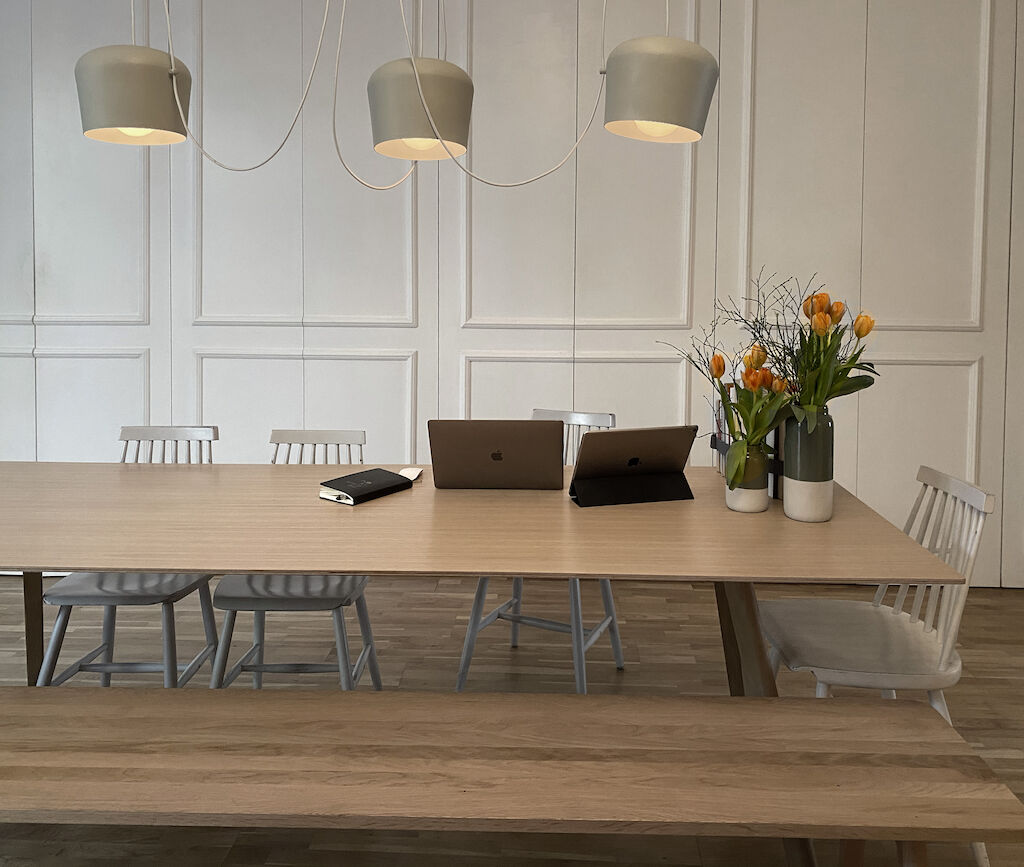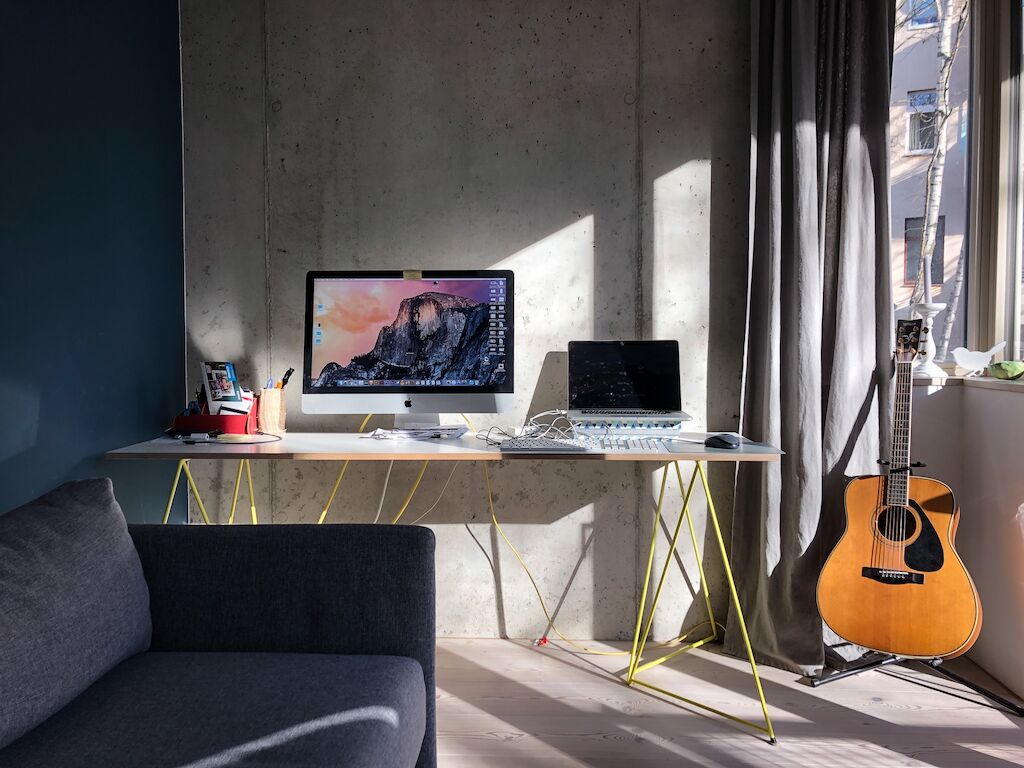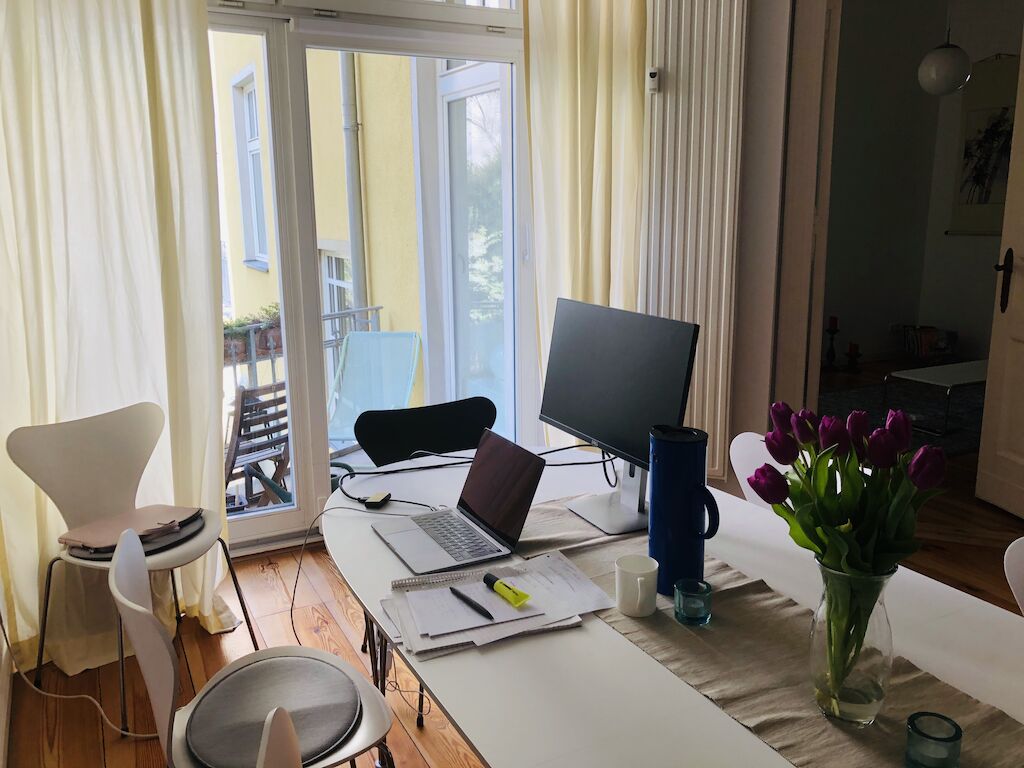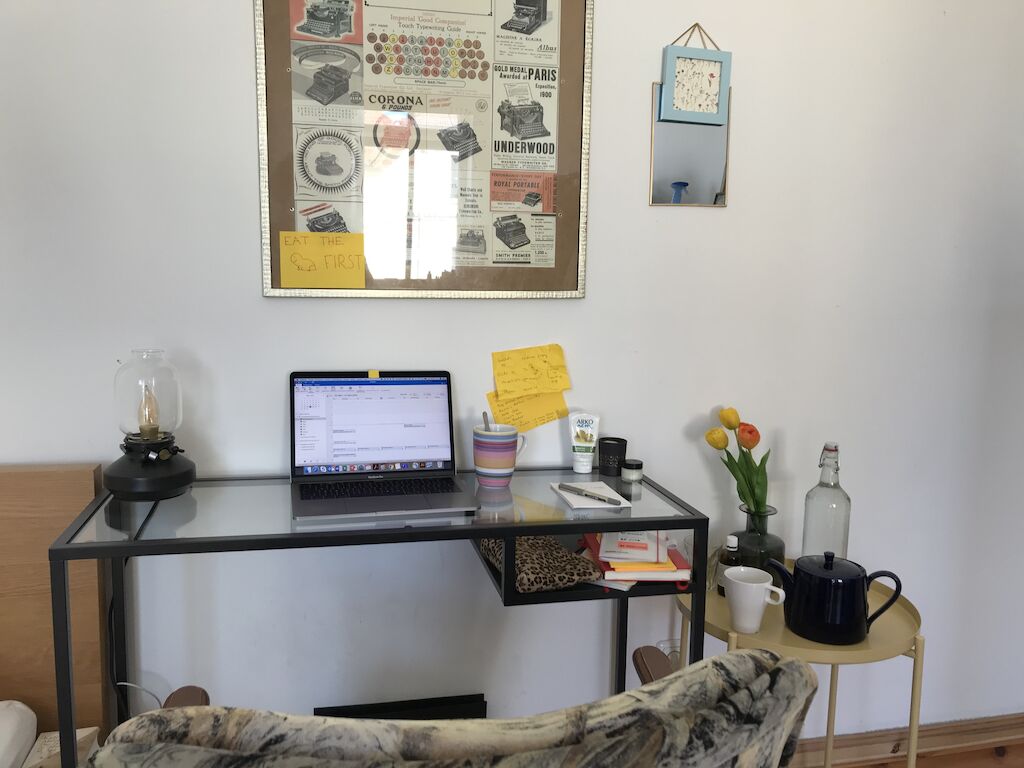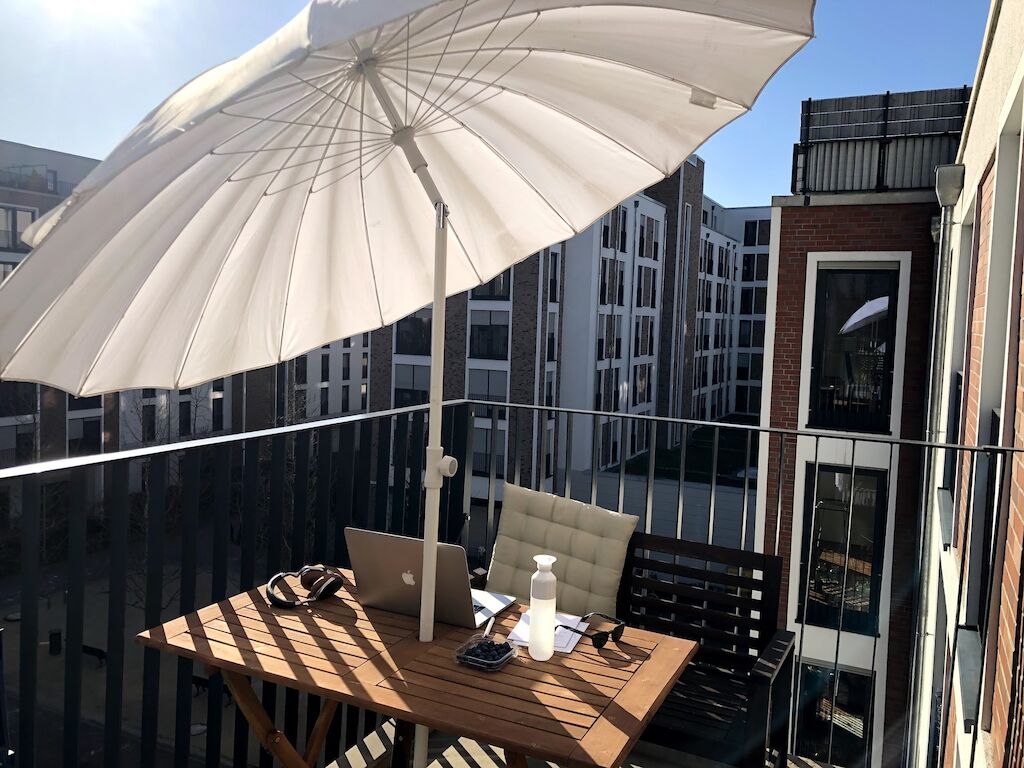4. Communication
Be disciplined during digital meetings
Online meetings do not only require the right online tool, but the discipline of each participant during the meeting. Not being face-to-face with other participants is an easy attempt to distract yourself by checking your phone or your e-mails. To avoid that an online meeting ends in frustration, make sure that everyone has their say and get themselves involved in the conversation. To identify different people with different roles can be better for the engagement of the participants and to avoid poor time management. Choose a moderator, who leads the meeting and introduces the agenda. Another role may include a note taker, who summarizes the key points and e-mails them to everyone after the meeting.
Stay connected with your colleagues
Be in regular exchange with your colleagues. Working from home does not mean that your daily dose of small talk with your work colleagues has to stop – it’s quite the opposite actually. The more physical distance there is, the more communication is needed to feel a sense of purpose and belonging to our colleagues and employer. Make a call, rather than writing an e-mail, call your colleagues not just for the exchange of important information but also to check-in on them every now and then.
5. Health
Boost your immune system
To boost your immune system, be active during your time at home. Go for a walk and get some fresh air, do a home workout or enjoy the first sunrays on your balcony or in your garden. Working from home can drain our daily energy. Make an extra effort to move, eat, and sleep healthily.
Our tip for extra motivation: download a fitness app, such as the Runtastic App or Nike Run Club to set up a group challenge with your friends or colleagues. Track your daily walk or run to not only improve your daily movements but to reach a shared goal together with your group.
Don't be too hard on yourself
Distractions close to your workspace should be avoided as much as possible. According to research, after being distracted it takes about 25 minutes for our brain to refocus on our task. (Thorne, 2020) While most of us have our routines and methods to avoid distractions in our regular work space, the home office situation is new to most of us and holds new sources of distraction. Unforeseen situations can always arise and all kinds of unexpected events can tempt us to lose our motivation for the day. It is important to recognize the flexibility of working from home. Sometimes it is smarter to pack up for now and come back to the desk with a fresh mind. It is only human that we cannot always work at 100% capacity.
The 80/20 rule of the Pareto Principle can be applied for a better time management. Simply explained, 20% of your efforts end up producing 80% of your outcomes. To focus on your 20% capacity, instead the entire 100% three key steps have to be followed. Start your work by identifying your daily key goals, prioritize your tasks, and protect your most important activities from your least important activities.
Are you interested to gain more knowledge about remote work and are you motivated to start learning online?
LinkedinLearning provides you with online courses, videos, and learning paths about time management and efficiency to work successfully from home.
